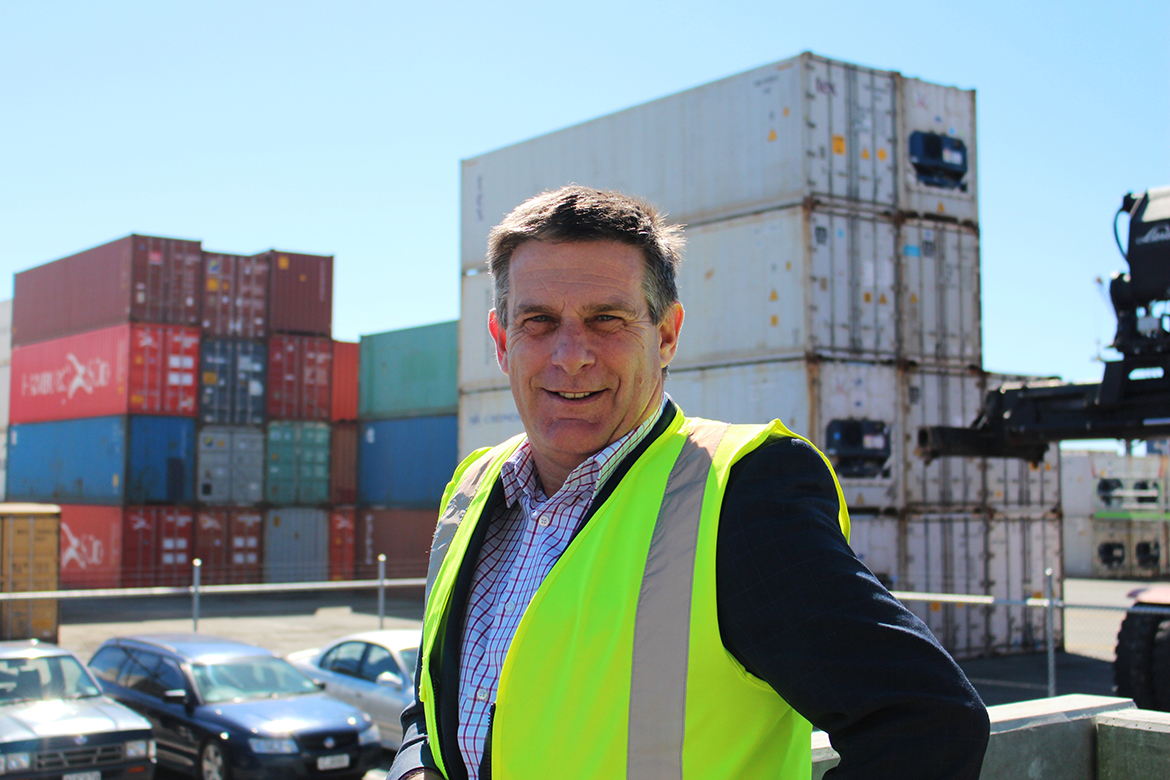Back in 1999, Garth Cowie “traded oysters for red wine” when he left the top job at South Port in Bluff and headed north to become chief executive at Napier Port.
“At the time I most probably thought I was getting the raw end of the deal but I’ve certainly found that the lifestyle and the growth prospects here were significant, compared to Bluff, and the port has gone from strength to strength since then.”
Garth retires as CEO in December after overseeing 18 years of growth and significant development at Napier Port.
When he announced his decision to leave in April, port chairman Alasdair MacLeod said Garth should take great pride in a number of achievements under his watch that have positioned Napier Port well for the future.
“He’s developed an outstanding senior management team and a motivated and dedicated staff across the board – across our marine, cargo handling and support functions. They are pushing industry boundaries nationally and internationally in health and safety, technology and logistics,” Alasdair said.
“Napier Port’s relationship with customers and suppliers is strong and the company is forging partnerships for collaboration across the globe. We are heading towards a healthy profit this year and we are currently planning for a wharf development that will see Napier Port significantly increase its capacity.”
When Garth arrived from South Port in 1999 – after five years as the Southland facility’s CEO – Napier Port was handling about 67,000 twenty-foot equivalent (TEU) containers a year. This year it will handle more than 288,000 and volumes are forecast to continue growing over coming years.
Cargo and log volumes have also increased markedly and Garth says significantly, the growth has been achieved on virtually the same physical footprint the port had when he arrived.
A key highlight over his time leading the company has been Napier surpassing Wellington and Port Chalmers to become the country’s fourth largest container terminal.
While the port industry has a history of strong union involvement, Garth says another highlight has been a change of culture to a more constructive, open and transparent relationship across the organisation. This was highlighted after last year’s Kaikoura earthquake which brought significant extra work to Napier, meaning the peak season arrived in December rather than March.
“It meant a huge change and our people had to adapt and be flexible to rise to the challenge. Our staff were working flat tack for six rather than three months of the year. We couldn’t allow people to go on leave so they had to reorganise their holidays and that sort of thing. So it’s the people who have really made all the difference over my time and that will be the thing I miss the most – the day-to-day contact and the relationships with the people here.”
Another highlight has been the port’s consultation over its upcoming $100 million-plus 6 Wharf development, which has involved feedback from more than 2000 people.
Born and bred in Invercargill, Garth studied accounting at university and began his working life as an assistant auditor with the Government Audit Office. In 1979 he became the accountant for what was then the Southland Harbour Board.
He was the harbour board’s secretary when it morphed into South Port in 1988, and took up the deputy chief executive role followed, in 1994, by the CEO role which he held for five years before heading north to Hawke’s Bay.
Garth says there were a number of factors behind his decision to step down after 18 years running Napier Port. One was Prime Minister John Key’s departure last year.
“He picked his own time, and didn’t have to. That started making me reflect that there is a right time for the chief executive to retire.”
Then long-serving port employee Graeme Hart passed away in January, aged 67.
“He didn’t get to enjoy the retirement that was coming. Both of those were triggers for me to think about what my future was going to be.”
Having turned 60 himself, Garth says he was also mindful of the major expansion work being planned at the port.
“With the development that we’ve got coming up, if I was going to stay I would need to stay to see it through, which is probably about another four years. I thought that was going to be too long and I really needed to make a decision to allow the new CEO to come onboard early enough to work through and understand it completely by the time the full business case was developed.”
While he is looking forward to stepping aside from the heavy demands of a CEO role, Garth will continue to chair a committee overseeing Hastings District Council’s water services change programme and will be looking to pick up other governance roles or advisory work.
“And hopefully my golf handicap might start to come down, slowly.”



